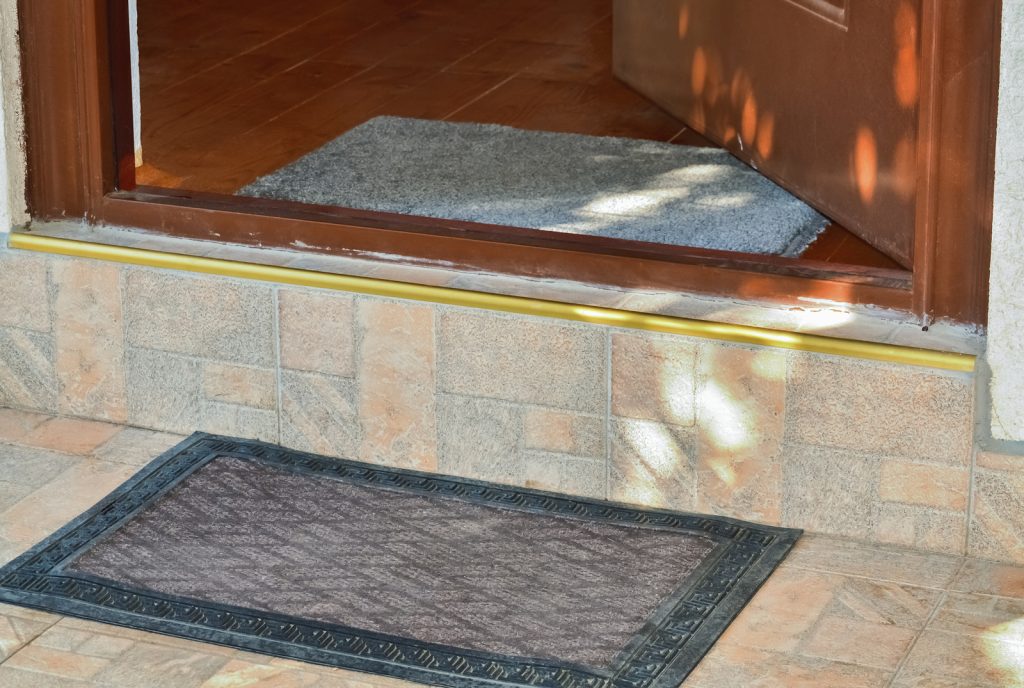
While an inviting entry, the step-up required to enter this home may prove to be over-challenging for some people, either those who live here or come to visit them, and resolving this would be helpful
There often is a large disconnect between designing solutions for our older clients who want to remain in their homes effectively, and those of any age who may have specific issues we want to address. Budget can get in the way or restrict what we want to do, but it doesn’t have to if we are creative and willing to place function over form.
It’s relatively easy to design a kitchen or bath update when the budget is not a huge consideration. Higher-end solutions are plentiful in the marketplace. It’s when we head the other way – toward a more limited budget – that we have to become more creative.
Nevertheless, we can achieve a safe environment for people – certainly safer than they have at present – for a very modest investment – four figures (under ten thousand dollars). Sometimes a few hundred dollars will get the job done.
While a limited expenditure may not be able to address all of the items in a home that we note and that we would like to modify or supplement, it will get the process started. If we are only able to a single modification for a client, they will be better off and have better use of their home than if we did nothing and walked away without touching their home.
Would it be great if we could do a couple of dozen improvements to someone’s home? Of course, but not everyone will allow it or be able to pay for it – even with a more modest approach. So we look at the most urgent issues – the ones that we really should not leave their home without getting a commitment from them to address. We start with that. If we can do more, great. If not, we will have done something important for them.
There are four major areas of a home environment that we want to look at and address, and we may not be able to do all of them. We look at each of these and prioritize within and among them to determine which tasks are the most important and urgent. That’s where we begin.
Those four areas are (1) accessibility – how someone enters their home, navigates it, and reaches and uses items within their home; (2) safety – how they use their kitchen, bathroom, and other areas of the home without an obvious risk or potential for injury; (3) comfort – generally how enjoyable it is to be in the space, live there, and use it, including air quality and temperature, lighting, textures, and overall feeling of well-being; and (4) convenience – how easy it is to locate, see, reach, and operate cabinets, drawers, appliances, fixtures, doors, windows, and controls within the home.
Sometimes, we might be able to get by without adding anything to the home or introducing any new features or fixtures. We might change out older incandescent bulbs with newer LED ones or remove a runner or scatter rug that can create a slip. Maybe we can help them reposition furniture or room lighting to create a less-cluttered look and facilitate navigation within their space.
Again, it’s relatively easy, and it’s certainly a lot of fun, to renovate a space with a showroom catalog and turn the home into something that would be worthy of sharing online. However, the point is safety and the other three elements just mentioned. Notice that aesthetics is not one of those elements – not unimportant but certainly not an overriding factor. Function is first, then comes the look. Often, we can accomplish both at once.
Sometimes, we might just need to empty a space and toss, donate, or repurpose excess, outdated, obsolete, broken, or unwanted items to make the living space more attractive and functional as well. Selling items is not on this list because that complicates the matter and weakens the objective of emptying the space since items have to be retained until they are sold – often for a very little amount. Many people are disappointed when trying to sell items online or at a yard sale because they see their treasures going for a small fraction of the intrinsic value they have or what it would take to replace them if they were so inclined.
As we survey our home and those of our clients, let’s look first at what requires our attention because an unsafe issue exists. It could be a slippery floor, glare or contrast, low-level lighting, or controls that are hard to grip or use.
Whatever we determine has the highest priority in terms of meeting and addressing the needs of the client, it may be a very basic solution that is simple and inexpensive to implement, or it could be more thorough and complex. Either way, the client will have benefitted from action that endeavors to assist them to be safer and more effective in their place of residence. We don’t have to do everything that might be needed or that we would like to do, but we must do something to start them on a safer path of living.
